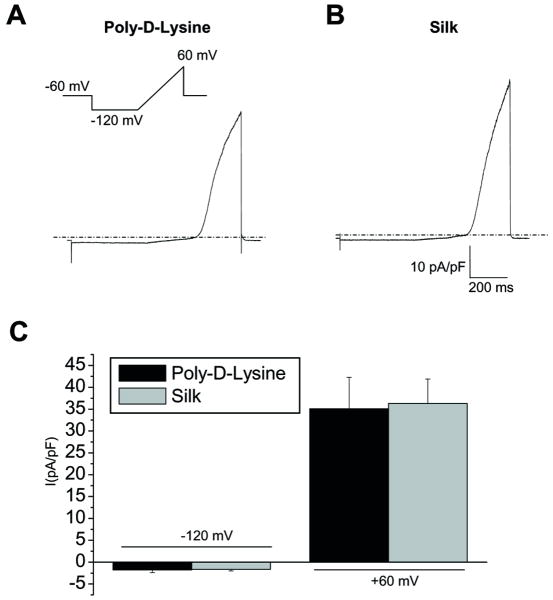Figure 3.
A-B) Current traces recorded stimulating astrocytes with a voltage ramp protocol from Vh of -60 mV, from -120 to +60 mV (600 ms), after a 500-ms-long step potential to -120 mV (inset), indicate that in astrocytes (left) plated on poly-D-lysine coated glass only voltage-dependent outward rectifying K+ currents are elicited at potentials more positive than -40 mV. (B) The current profile of astrocytes plated on silk coated coverslips were comparable. C) Histogram plot of current density recorded at -120 mV and +60 mV in two experimental conditions revealed that no significant difference was detected on poly-D-lysine (black bars) and silk-plated cells (gray bars) for inward and outward currents. (n=10 for poly-D-Lysine coated and n=26 for silk-plated cells, p>0.05, Independent t-test).

